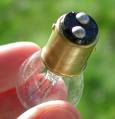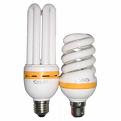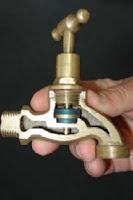
Security is a big issue for country like Malaysia. The crime rate is very high and the police is ineffective. The criminals are very bold due to poor
 policing. Even if a crime is reported, the police reaction is deplorable.
policing. Even if a crime is reported, the police reaction is deplorable. Citizen of Malaysia have no choice but to take crime prevention into their own hands. Their homes are secured with burglar alarm system, CCTV, high perimeter fencing and grilles to all windows and doors. On top of this, some communities implemented the guarded and gated community system, where all exit and entry points to the community are guarded 24 hours.
The homes of Malaysian are like a prison. In the event of a disaster like, fire, storm or tsunami, many of them will be trapped. In comparison with certain countries, like USA (State of California), Vietnam, Australia and New Zealand, the houses have no perimeter fencing, no grilles and no burglar alarm system. Except for those very rich and famous peoples, like the Beverly Hill community in Los Angeles.
The grilles for door and window use many type of materials. Some are stainless steel. Others are mild steel (MS), aluminium, cast iron, alloy and reinforced PVC (plastic).
The most common and the cheapest type of material is the MS grille. But MS grille has the problem of corrosion (rusting). The average cost of fixing or replacing the MS grille for a double-storey link house is about RM3,000 (USD860). For a semi-detached house the cost of the ms grille is approximately RM4,500 (USD1,280) and for a bungalow house is about RM15,000 (USD4,280).
Due to the Malaysian weather, the ms grille will corrode completely after five years and detached itself from the concrete wall, if not maintain regularly.  For regular maintenance, if you can afford it, engage a contractor to treat and repaint all your ms grilles every 3-4 years. If not, DIY.
For regular maintenance, if you can afford it, engage a contractor to treat and repaint all your ms grilles every 3-4 years. If not, DIY.
The picture on the right shows the ms grille with mild corrosion. If not treated, the grille will be damaged eventually.
The DIY ms grille maintenance is fairly easy and economical. Inspect the ms grille monthly for any sign of rust. Remove the rust with a sandpaper, apply a coat of anti-rust primer (usually comes in maroon colour) to the spot. One litre of anti-rust primer cost about RM8.50 (USD2.50). Wait for a day for the primer to dry and repaint over the area with the gloss paint (paint for metal and wood) of the same colour. A litre of ICI brand gloss paint cost RM25.00 (USD8.50). If you choose to, you can repaint the whole grille.
The tools and materials required are:
Ladder
Rags (to remove drips )
Plastic sheet (to prevent drips on the floor and window sill )
Hand gloves (cotton)
Mask (for sanding and if you cannot tolerate dust and the smell of paint)
Half inch paint brush.
Thinner (dilute paint and clear drips)
Anti-rust primer (half litre or one litre)>
Paint (buy small quantity, half or one litre, to prevent evaporation and dry up) 
The paint should be diluted with thinner for easier application. Always pour out the required amount of paint to mix with the thinner. Do not dilute the whole tin of paint with the thinner, unless you want to use up the whole tin on the same day. If you wish to re-use the painting brush, clean the brush with thinner and rinse with soap water and let is dry. On re-use, if the brush is hardened, dip into the thinner to return to is original condition.
To prevent the dripping paint from your floor or window sill or doorway, place the plastic sheet to protect the areas before painting.
You can do this maintenance job at your own pace and leisure time, bit by bit, so that it would not drain your energy or bore you to death.
The cost of doing the ms grille maintenance DIY is only a small fraction of the price a contractor would charged you. Estimated DIY cost is 60% lower than engaging a contractor.








